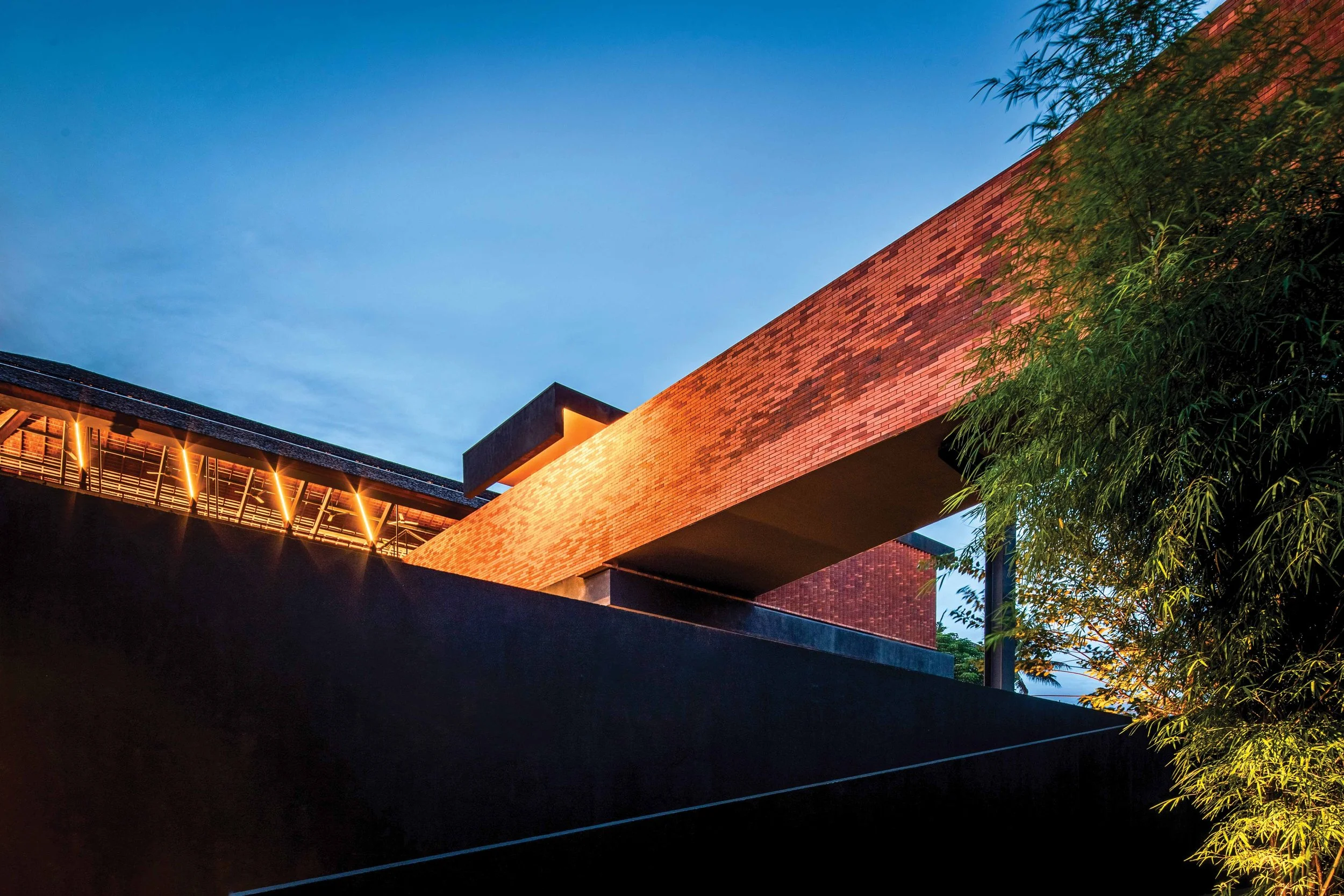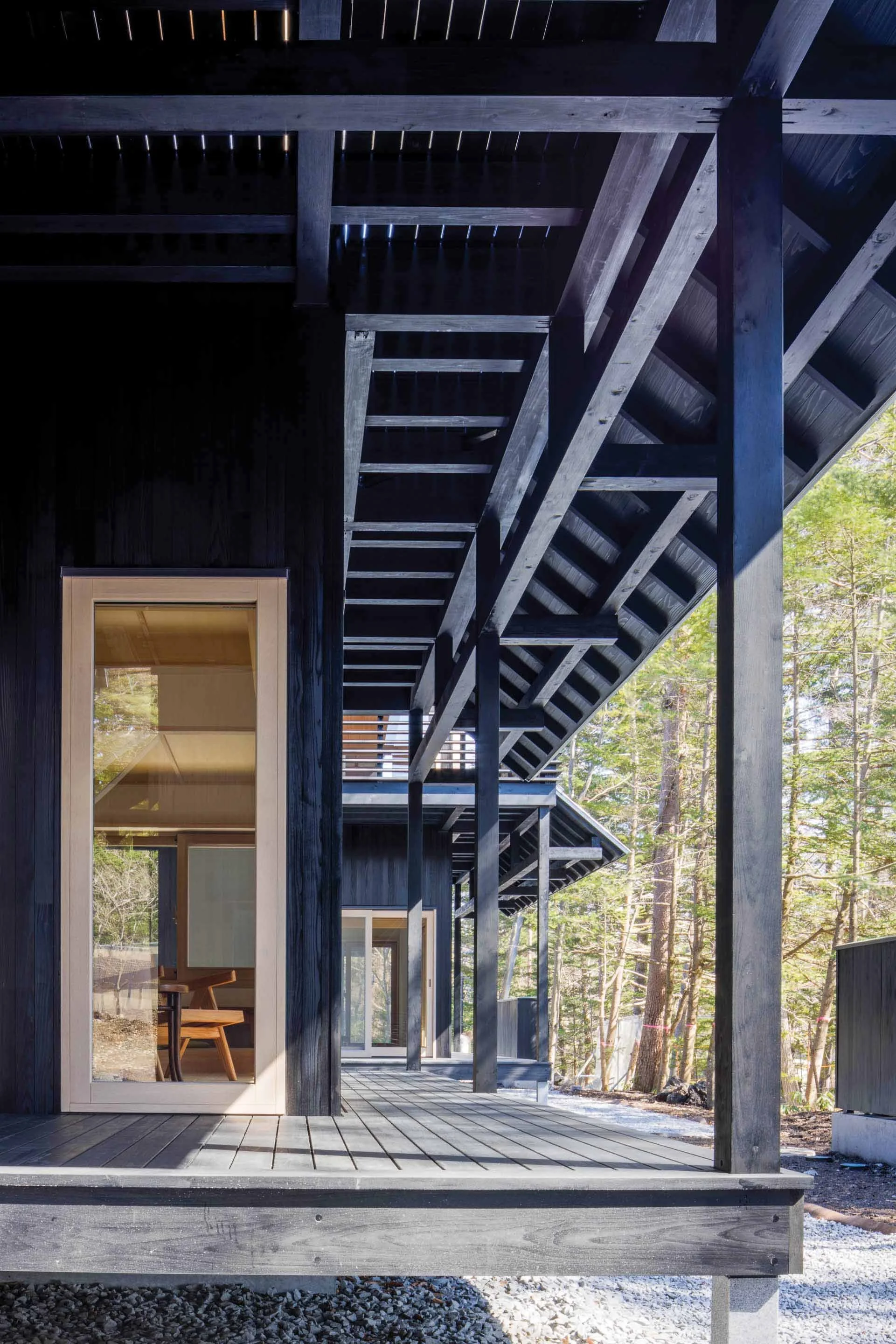Beyond the Blueprint
Titik Dua, Ubud, Bali, by Andra Matin.
(All photos courtesy their respective owners.)
While the idea of lodging for travelers began with offering temporary places to stay while on a journey or at one’s destination, an offshoot from the established cookie-cutter hotels has emerged. No matter the number of stars a property has, a design shorthand for hotels exemplified what we typically see when arriving at a hotel property: the forecourt, its adjoining lobby, some form of dining and bar, and hopefully elevators to a block of stacked rooms in a layout that is replicated across the globe. The departure from that is a full swing of the pendulum away from those cues, with an emphasis on design-forward architecture and the breaking of a few rules from the head office — if one even exists — with the arrival of globally recognized design hotels, which are destinations unto themselves.
The script has been flipped with these design hotels becoming the main draw for savvy travelers over the area or city that they want to explore; the place to stay has risen in priority as a new generation of travelers choose their space over the lure of points or earned nights at what have essentially become chain hotels replicated across the globe.
What the members of this new genre of hotels have in common is, ironically, having very little in common with each other, or what one thinks of as “a hotel.” No matter their location or style, each one breaks the mold in layout, design and materials by being a unique interpretation of the architect’s and owner’s vision. With the right owner finding the ideal architect, that collaborative vision and dedication to putting creative elements and design at the top of the list results in unique properties such as we find in this eclectic grouping, chosen here for the same reasons that travelers would pick them: they truly stand out and they deliver as much as they delight, for all of our senses.
Titik Dua, Ubud, Bali, by Andra Matin.
Titik Dua, Ubud, Bali, by Andra Matin.
Titik Dua, Ubud, Bali, by Andra Matin.
TITIK DUA, UBUD
BALI, INDONESIA
One doesn’t have to look very far in Bali to find art, and that’s especially true in Ubud. What one will have to do, though, to find this hotel designed by leading Indonesian architect Andra Matin, is first locate the historic roadside art gallery that was preserved during its construction. Set back on the edge of a coconut grove, with actively farmed rice paddies nearby, the hotel’s 22 rooms are accessible via a strikingly modern elevated walkway that spans the distance. Part and parcel to the hotel’s design is the inclusion of modern art exhibition spaces: “It provides a platform for creative industry players to express themselves,” explains Matin. With the hotel echoing signature cues in brick and angular forms, and being closely tied to art and design, Matin shares that more is being added to enhance guests’ experiences: “Following the success and growth of the hotel, we are expanding and adding a design hub, mini-theater and a new lawn to accommodate larger-scale events.” If viewing all the art calls for a change of scenery, all one has to do is step into one of the poolside rooms and look across at a dense thicket of coconut trees to reset and be ready for another day’s adventures around the island.
Shishi-Iwa- House by Shigeru Ban, Karuizawa, Japan. Ryue Nishizawa.
Shishi-Iwa- House by Shigeru Ban, Karuizawa, Japan. Ryue Nishizawa.
Shishi-Iwa- House by Shigeru Ban, Karuizawa, Japan. Ryue Nishizawa.
Shishi-Iwa- House by Shigeru Ban, Karuizawa, Japan. Ryue Nishizawa.
SHISHI-IWA-HOUSE
KARUIZAWA, JAPAN
Karuizawa has long been a multi-season destination for Tokyo’s cognoscenti, with modest cabins and luxurious estates tucked into the foothills of Nagano Prefecture. The idyllic landscape and wooded hills have been drawing artists and their patrons for decades, so it is no surprise that it is here that Shishi-Iwa’s first three houses — all designed by Pritzker Prize awardees — came to be: No. 1 and No. 2 are by Shigeru Ban, and No. 3 is by SANAA Architects co-founder Ryue Nishizawa. Each has a distinct aesthetic, as one can imagine when the architects are given free rein to execute their vision. No. 3 brings tradition to the modern age, with Nishizawa breaking the rooms apart into separate blocks that leverage tradition with shou sugi ban charred-wood exteriors and sparse hinoki wood and tatami floor interiors, all connected by traditional Japanese engawa, which form the transition from interior to exterior, and are also a space to gather and meet. In contrast, while both No. 1 and No. 2 were penned by Shigeru Ban and leverage his use of structural wood, they differ in execution and style. Housing its rooms in a gentle s-curve surrounded by pine trees, No. 1 shares elements of Shigeru Ban’s signature style and furniture with No. 2, which serves as the hotel’s main gathering spot and home to award-winning Shola restaurant.
JUVET LANDSCAPE HOTEL
VALLDAL, NORWAY
While it is the smallest, with only seven rooms, and definitely the most isolated hotel in this group — being far from anywhere and perched on a bluff overlooking a valley and river below — its location and scale definitely played a part in Jensen & Skodvin Architects’ design. Each of the seven Nordic aesthetic rooms has two large plate glass windows that are virtually frameless. Cantilevered out into nature, with views carefully curated to eliminate sight lines that may reveal other rooms, each view is truly unique. This calculated privacy means no curtains are needed in any of the rooms, and the goal is for guests to observe the ever-changing scene and light as it falls on the land, no matter the season. The hotel’s placed-within-nature element is striking and may remind readers that it served as the location for the sci-fi tech thriller Ex Machina (as well as the alpine retreat in the final season of Succession). While we may not be fully immersed in that futuristic world yet, we can visit and find ourselves observing — or being observed by — nature, up close.
Juvet Landscape Hotel, Valledal, Norway, by Jensen & Skodvin Architects.
Juvet Landscape Hotel, Valledal, Norway, by Jensen & Skodvin Architects.
(All photos courtesy their respective owners.)
SCHGAGULER HOTEL
CASTELROTTO, SOUTH TYROL, ITALY
In this contemporary interpretation of Alpine-style buildings, Milan-based architect Peter Pichler takes the vernacular and pays homage to local materials throughout the hotel. Concrete and glass are deployed with subtle nods to centuries-old traditions, as seen in the roof pitch and massing of the hotel, and within, a sparse combination of hygge and zen combine to deliver refreshingly uncluttered-yet-warm spaces to put oneself in. Whether it is camping out in a lofty room from which to start one’s alpine treks around the Dolomites, or retreating to the spa to soothe one’s weary limbs, the hotel delivers on design touches and carefully chosen materials and surfaces that remind guests that being here is truly a reward for not having chosen more generic lodging.
SIR VICTOR HOTEL
BARCELONA, SPAIN
Walking up to the Sir Victor’s street-facing façade of curled-back paper doesn’t reveal clues about what spaces wait within. Appropriate for Barcelona — where architects’ statements form part of the urban landscape — architect Juli Capella’s strikingly simple form is draped around new interiors by Sir Hotels’ go-to design firm Baranowitz + Kronenberg. Stepping in from the street reveals modern, welcoming spaces designed to ease one’s pace and shift into a more local timeline where nothing is hurried, and everything is appreciated. A stay at the Sir Victor highlights the designers’ modern touches in the rooms, which are juxtaposed with some of the city’s equally iconic architecture on display right outside. Barcelona’s scale and style are certainly sights to take in, and the Sir Victor elegantly provides an elegant counterpoint to return to after a day of urban adventure.
This roundup of noteworthy design hotels isn’t ranked, and they aren’t chosen by any metric —not by architect, nor by aesthetic — but only because they broke free from the expected and serve as reminders to step outside the usual suspects, and to reward one’s senses while stopping and staying in style.










